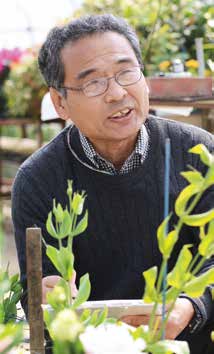Research Area : Control of Flowering
Development of compacted medium using heat fusion fiber
We found that medium could be hardened using heat fusion fiber. We demonstrated that use of hardened medium could enable cell transplants production and bedding plant production without polyethylene pots. Pansy and garden-type cyclamen plants grown in compacted medium without polyethylene pots in the summer season were bigger than those grown in compacted medium with polyethylene pots. The temperature of the medium without polyethylene pots was lower than that with polyethylene pots. This could be due to the evaporative cooling effect from the surface of compacted medium without polyethylene pots.
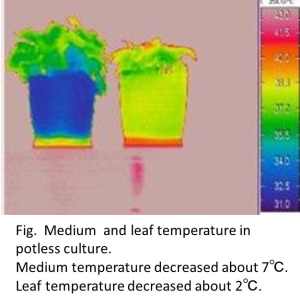
Improvement of growth and flowering of Eustoma grandiflorum by low temperature treatment
It is important to establish a suitable method for rosette avoidance and cost reduction in Eustoma seedlings production in summer. We found that intermittent low temperature storage treatment could be available as a supplemental method to prevent rosette of Eustoma seedlings after application of low temperature treatment to imbibed seed. However, suitable temperature and cycle have not been clarified. We confirmed that the cycle of 15-15 day stored at 10˚C was a suitable treatment to avoid rosette, promote growth and decrease labor for Eustoma growing.
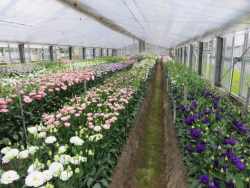
Research Area : Control of Flowering
Study on the vein structures that increase water transportation in plant decorative organs
Some plant species show characteristic vein structure in decorative floral organs, development of sclerified parenchyma cells.
The sclerified parenchyma cells increase water transport in decorative organs and flowering longevity on plant or vase life.
We are studying the mechanisms underlying sclerified parenchyma cell differentiation and trying to use them for increasing the flower longevity.
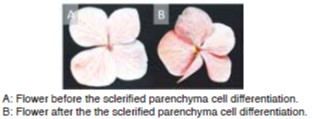
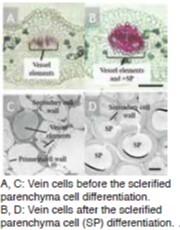
Research on flavone synthesis regulation in flower
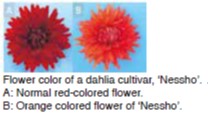
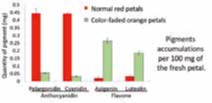
Plants of a dahlia cultivar ‘Nessho’ produces solid red colored flower from spring to autumn. However, they produce orange colored flower in winter. The color change is owing to the increase in the flavone accumulation and decrease in the anthocyanidin accumulation.
We are studying the underlying mechanisms of seasonal change of the pigment accumulation.

